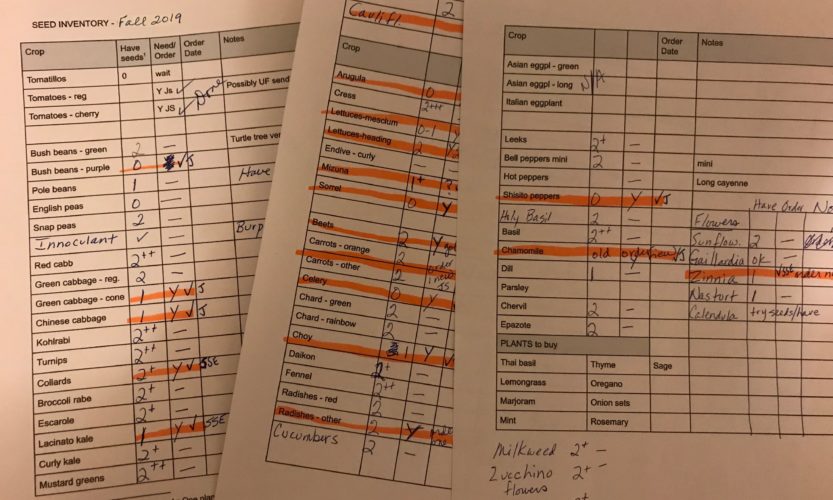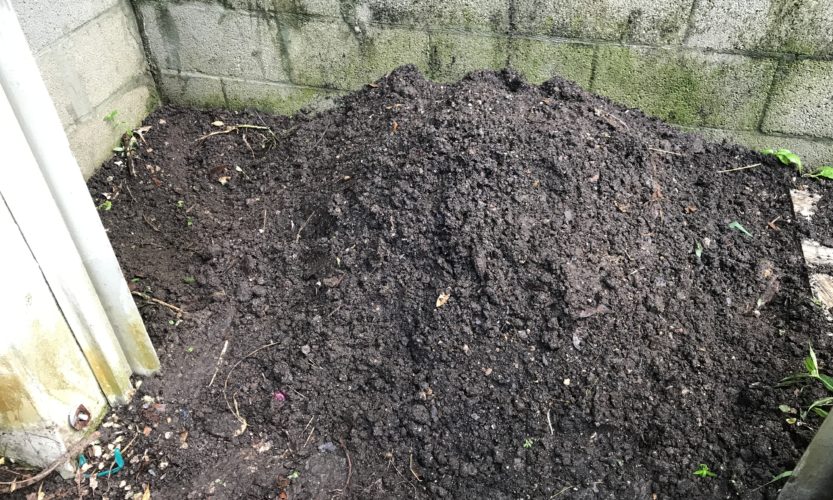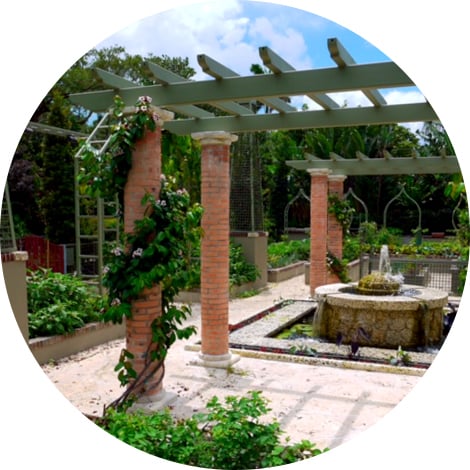Preparing for the Fall Garden

Fall 2019
August and September – hereafter referred to as summer months – are sooo hot in South Florida, and in our garden there is very little growing to harvest and cook (besides some okra and a few herbs). The remainder of the spring vegetables have finally given their last breath (would you believe we harvested a few leeks and some chard in August?!); the sunflowers are wilted and gone; the herbs are either bid farewell to or hanging tough through the summer heat depending on their durability. We said goodbye to the sorrel, basil and tomatillo plants recently, sad to say, they just gave out.
Seedling City – Where It All Begins

We’ve described how we prepare the soil in our beds for planting – now it’s time to discuss how we get our plants started. Because we are in South Florida, our prime time for cultivating seedlings is in the fall.
We basically have three methods for starting our plants in the garden:
- Planting seeds in flats for transplanting seedlings later
- Planting seeds directly into the garden beds to sprout there
- Buying small starter plants to put directly into the beds
We definitely prefer to start our plants from seed, for a number of reasons. First, when you purchase seeds as opposed to starter plants, there’s a much greater variety to choose from. We also like cultivating them from their very beginnings in our own organic soil and supplements. And it’s much less expensive than buying plants. There is also the chance of introducing pests and/or diseases that are brought in on starter plants. Last but not least, who doesn’t love the hands-on experience and good feeling of engaging in a plant’s growth every step of the way?
Compost It!

Compost is one of the main keys to a healthy, thriving organic garden. We used to be able to buy some really incredible ready-made organic soil, but no more. So a few years back, we set out to learn how to create our own, and found how essential it was to produce a steady supply of compost! Our two main resources, where we learned the most, was (my gardening bible!) How to Grow More Vegetables by John Jeavons, and the University of Florida’s Agricultural Extension’s resources, especially this article: Compost Tips for the Home Gardener. We learned that composting isn’t about constantly throwing your scraps into a pile whenever you had some; it is a careful layering technique in a designated area with specific dimensions and scheduled maintenance. We had a lot to learn, but now that we’ve got the hang of it, we enjoy the whole routine (although the saved-up kitchen scraps can be nasty!) and especially using the compost to enrich our vegetable garden – nothing like that rich, dark compost that we know is chock full of nutrients!
